History
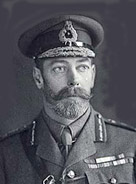 Wars always bring changes…especially in how nations feel about other nations. Sometimes, the whole world seems to be against one nation that has proven itself to be particularly evil. Germany was one of those nations that the entire world was against during World War I, as well as during World War II. It was during World War I that Britain’s King George V was quite concerned about the anti-German sentiment that existed in the world and in Britain. His family was of German descent, and the family name was very much a German name…Saxe-Coburg-Gotha, to be exact.
Wars always bring changes…especially in how nations feel about other nations. Sometimes, the whole world seems to be against one nation that has proven itself to be particularly evil. Germany was one of those nations that the entire world was against during World War I, as well as during World War II. It was during World War I that Britain’s King George V was quite concerned about the anti-German sentiment that existed in the world and in Britain. His family was of German descent, and the family name was very much a German name…Saxe-Coburg-Gotha, to be exact.
George was born on June 3, 1865, the second son of Prince Edward of Wales, who later became King Edward VII and Alexandra of Denmark, and the grandson of Queen Victoria. He embarked on a naval career before becoming heir to the throne in 1892 when his older brother, Edward, died of pneumonia. The following year, George married the German princess Mary of Teck, who was his cousin, a granddaughter of King George III, and who had previously been intended for Edward. The couple had six children, including the future Edward 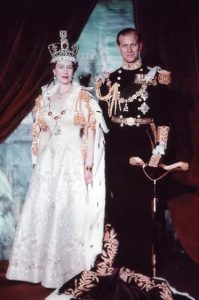 VIII and George VI, who took the throne in 1936 after his brother abdicated to marry the American divorcee Wallis Simpson. As the new Duke of York, George had to abandon his career in the navy. He became a member of the House of Lords and received a political education. When his father died in 1910, George ascended to the British throne as King George V.
VIII and George VI, who took the throne in 1936 after his brother abdicated to marry the American divorcee Wallis Simpson. As the new Duke of York, George had to abandon his career in the navy. He became a member of the House of Lords and received a political education. When his father died in 1910, George ascended to the British throne as King George V.
With the outbreak of World War I in the summer of 1914, strong anti-German feeling within Britain caused sensitivity among the royal family about its German roots. Kaiser Wilhelm II of Germany, also a grandson of Queen Victoria, was the king’s cousin; the queen herself was German. Public respect for the king increased during World War One, when he made many visits to the front line, hospitals, factories and dockyards. Still, because of anti-German feeling George V felt led to adopt the family name of Windsor, so on June 19, 1917, the king decreed that the royal surname was thereby changed from Saxe-Coburg-Gotha to Windsor, which it has remain since that day.
After the World War II, the current Prince Philip was granted permission by King George VI to marry the future Queen Elizabeth. Before the official announcement of their engagement, Philip abandoned his Greek and Danish royal titles and became a naturalized British subject, adopting the surname Mountbatten from his maternal grandparents. After an engagement of five months, he married Elizabeth on November 20, 1947. Just before  the wedding, Philip was made the Duke of Edinburgh. He left active military service when Elizabeth became monarch in 1952, having reached the rank of commander. He was formally made a British prince in 1957. Mountbatten-Windsor is the personal surname used by the male-line descendants of Queen Elizabeth II and Prince Philip, Duke of Edinburgh. Under a declaration made in Privy Council in 1960, the name Mountbatten-Windsor applies to male-line descendants of the Queen without royal styles and titles. Individuals with royal styles do not usually use a surname, but some descendants of the Queen with royal styles have used Mountbatten-Windsor when a surname was required.
the wedding, Philip was made the Duke of Edinburgh. He left active military service when Elizabeth became monarch in 1952, having reached the rank of commander. He was formally made a British prince in 1957. Mountbatten-Windsor is the personal surname used by the male-line descendants of Queen Elizabeth II and Prince Philip, Duke of Edinburgh. Under a declaration made in Privy Council in 1960, the name Mountbatten-Windsor applies to male-line descendants of the Queen without royal styles and titles. Individuals with royal styles do not usually use a surname, but some descendants of the Queen with royal styles have used Mountbatten-Windsor when a surname was required.
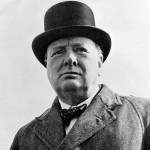
 In a war, sometimes the best thing that can be done is to retreat, but that is not always easy to do. When the enemy is closing in and there seems no way of escape. Sometimes, a way of escape seems to come together in such a way that it almost seems miraculous…or maybe that is the only real explanation…a miracle. Such seemed to be the case with Britain both in Dunkirk, France, called Operation Dynamo, and again from Cherbourg, Saint Malo, Brest, and Nantes, dubbed Operation Aerial. The evacuation from Dunkirk, was most likely the largest of its kind, or at least up to that date. I suppose there might have been others since then, but I am not aware of any. During the evacuation of Dunkirk, the British managed to evacuate 338,226 soldiers…and almost unheard of amount of men were saved, by a coordinated effort using 860 boats. During Operation Ariel, another 191,870 troops were rescued, bringing the total of military and civilian personnel returned to Britain during the Battle of France to 558,032, including 368,491 British troops.
In a war, sometimes the best thing that can be done is to retreat, but that is not always easy to do. When the enemy is closing in and there seems no way of escape. Sometimes, a way of escape seems to come together in such a way that it almost seems miraculous…or maybe that is the only real explanation…a miracle. Such seemed to be the case with Britain both in Dunkirk, France, called Operation Dynamo, and again from Cherbourg, Saint Malo, Brest, and Nantes, dubbed Operation Aerial. The evacuation from Dunkirk, was most likely the largest of its kind, or at least up to that date. I suppose there might have been others since then, but I am not aware of any. During the evacuation of Dunkirk, the British managed to evacuate 338,226 soldiers…and almost unheard of amount of men were saved, by a coordinated effort using 860 boats. During Operation Ariel, another 191,870 troops were rescued, bringing the total of military and civilian personnel returned to Britain during the Battle of France to 558,032, including 368,491 British troops.
Operation Aerial began on June 15, 1940 and ended on June 25, 1940. Following the military collapse in the Battle of France against Nazi Germany, it became evident that Allied soldiers and civilians were in grave danger. With two-thirds of France now occupied by German troops, those British and Allied troops that had not participated in Operation Dynamo, the evacuation of Dunkirk, were shipped home, but there remained a concern for the areas from Cherbourg, St. Malo, Brest, and Nantes. While these men were not under the immediate threat of assault, as at Dunkirk, they were by no means safe, so Brits, Poles, and Canadian troops were rescued from occupied territory by boats sent from Britain. Meanwhile, British Prime Minister Winston Churchill offered words of encouragement in a broadcast to the nation, “Whatever has happened in France…we shall defend our island home, and with the British Empire we shall fight on unconquerable until the curse of Hitler is lifted.” This was his way of promising that Britain would never fall under Nazi rule.
Operation Aerial was split into two sectors. Admiral James, based at Portsmouth, was to control the evacuation from Cherbourg and St Malo, while Admiral Dunbar-Nasmith, the commander-in-chief of the Western Approaches, based at Plymouth, would control the evacuation from Brest, St. Nazaire and La Pallice. Eventually this western evacuation would extend to include the ports on the Gironde estuary, Bayonne and St Jean-de-Luz. Once the people were on board, I’m sure they thought they were finally safe, but that was not necessarily the case. The Germans attacked the rescue boats. Among those rescued from the shores of France, were 5,000 soldiers and French civilians on board the ocean liner Lancastria, which had picked them up at St. Nazaire. Germans bombers sunk the liner on June 17, 1940, and 3,000 passengers drowned. Churchill ordered that news of the Lancastria not be broadcast in Britain, fearing the effect it would have on public morale, since everyone was already worried about a possible German invasion now that only a channel separated them. The British public would eventually find out, but not for another six weeks, when the news broke in the United States. They would also receive the good news that Hitler had no immediate plans for an invasion of the British isle, “being well aware of the difficulties involved in such an operation,” reported the German High Command.
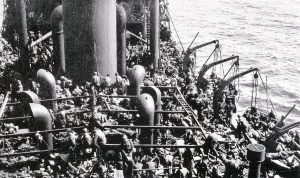

In the end, the evacuations dubbed Operation Dynamo and Operation Aerial, were successful, in that most of those who were evacuated made it home. I’m sure that the retreats did not feel like a success or a victory to the soldiers fighting in the Battle of France, but I am also sure that they were thankful to be among those who made it home. They would live to fight another day in the horrendous war that was World War II.
 World wars are a complicated matter. There are multiple enemies, multiple allies, and the lines are not necessarily very clear. The one thing that always seems to be a constant, however, is territory. Imperialism…when a country takes over new lands or countries and makes them subject to their rule, played a big roll in World War I, as did industrialism. By 1900, any territorial gain by one power meant the loss of territory by another, and for Britain, the strongest of all the empires, that was a problem. Britain’s colonial territory was over 100 times the size of its own territory at home, thus giving rise to the phrase “the sun never sets on the British empire.” At this same time, France had control of large areas of Africa. With the rise of industrialism countries needed new markets. The amount of lands owned by Britain and France increased the rivalry with Germany who had entered the scramble to acquire colonies late and only had small areas of Africa.
World wars are a complicated matter. There are multiple enemies, multiple allies, and the lines are not necessarily very clear. The one thing that always seems to be a constant, however, is territory. Imperialism…when a country takes over new lands or countries and makes them subject to their rule, played a big roll in World War I, as did industrialism. By 1900, any territorial gain by one power meant the loss of territory by another, and for Britain, the strongest of all the empires, that was a problem. Britain’s colonial territory was over 100 times the size of its own territory at home, thus giving rise to the phrase “the sun never sets on the British empire.” At this same time, France had control of large areas of Africa. With the rise of industrialism countries needed new markets. The amount of lands owned by Britain and France increased the rivalry with Germany who had entered the scramble to acquire colonies late and only had small areas of Africa.
During this time Germany became concerned that Russia might try to take over their nation, so they signed a  treaty with Austria-Hungary to protect each other from Russia. The Dual Alliance was created by treaty on October 7, 1879 as part of Bismarck’s system of alliances to prevent or limit war. The two powers promised each other support in case of attack by Russia. Also, each state promised benevolent neutrality to the other if one of them was attacked by another European power, most likely France. Germany’s Otto von Bismarck saw the alliance as a way to prevent the isolation of Germany and to preserve peace, as Russia would not wage war against both empires. Then in 1881, Austria-Hungary made an alliance with Serbia to stop Russia from gaining control of Serbia. Before long alliances were popping up everywhere. Germany and Austria-Hungary made an alliance with Italy in 1882 that was dubbed The Triple Alliance to stop Italy from taking sides with Russia. Then in 1894, Russia formed an alliance with France called the Franco-Russian Alliance, to protect Russia against Germany and Austria-Hungary.
treaty with Austria-Hungary to protect each other from Russia. The Dual Alliance was created by treaty on October 7, 1879 as part of Bismarck’s system of alliances to prevent or limit war. The two powers promised each other support in case of attack by Russia. Also, each state promised benevolent neutrality to the other if one of them was attacked by another European power, most likely France. Germany’s Otto von Bismarck saw the alliance as a way to prevent the isolation of Germany and to preserve peace, as Russia would not wage war against both empires. Then in 1881, Austria-Hungary made an alliance with Serbia to stop Russia from gaining control of Serbia. Before long alliances were popping up everywhere. Germany and Austria-Hungary made an alliance with Italy in 1882 that was dubbed The Triple Alliance to stop Italy from taking sides with Russia. Then in 1894, Russia formed an alliance with France called the Franco-Russian Alliance, to protect Russia against Germany and Austria-Hungary.
Now at this point, I’m sure you feel as confused about all this as I did. To me, it seems like it would be very difficult to know who the enemy really was, and even if you knew, it was subject to change, depending on who they formed an alliance with. That is also why I was wondering why on June 16, 1918, the Battle of the Piave River was raging on the Italian front. Russia had bowed out of the war effort in early 1918, and Germany began  to pressure its ally, Austria-Hungary, to devote more resources to combating Italy. Wait…I thought Italy was their ally…apparently not so much. Specifically, the Germans wanted a major new offensive along the Piave River, located just a few kilometers from such important Italian urban centers as Venice, Padua and Verona. In addition to striking on the heels of Russia’s withdrawal, the offensive was intended as a follow-up to the spectacular success of the German-aided operations at Caporetto in the autumn of 1917. Wars really seem to be quite senseless, but when Imperialistic nations try to expand their territories, I guess, alliances can be made and broken quite easily.
to pressure its ally, Austria-Hungary, to devote more resources to combating Italy. Wait…I thought Italy was their ally…apparently not so much. Specifically, the Germans wanted a major new offensive along the Piave River, located just a few kilometers from such important Italian urban centers as Venice, Padua and Verona. In addition to striking on the heels of Russia’s withdrawal, the offensive was intended as a follow-up to the spectacular success of the German-aided operations at Caporetto in the autumn of 1917. Wars really seem to be quite senseless, but when Imperialistic nations try to expand their territories, I guess, alliances can be made and broken quite easily.
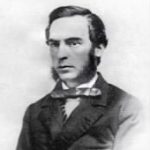
 These days, as wars are fought, we often see, hear, and read the stories written by embedded reporters. It seems almost commonplace, and yet in reality, whenever these reporters go into a war zone, they are risking almost as much as the soldiers. Of course, the reporters don’t go out to attack the enemy, but because of where they are, and who they are with, they make themselves a target to the enemy too. Even as far back as the World Wars, embedded reporters seemed like a common phenomenon, but who would have thought of an embedded reporter as far back as the Indian wars? I certainly didn’t. Nevertheless, journalists were there. One such journalist, who became famous, mostly because he was killed, was Marcus Kellogg, who was traveling with Custer’s 7th Cavalry. Kellogg was a native of Ontario, Canada before immigrating to New York with his family in 1835. As a young man he mastered the art of the telegraph and went to work for the Pacific Telegraphy Company in Wisconsin. During the Civil War, he felt led toward a different calling. He left his career in telegraphy, and became a journalist. Then in 1873, he again felt the calling to change his life, when he decided to move west to the frontier town of Bismarck in Dakota Territory and became the assistant editor of the Bismarck Tribune.
These days, as wars are fought, we often see, hear, and read the stories written by embedded reporters. It seems almost commonplace, and yet in reality, whenever these reporters go into a war zone, they are risking almost as much as the soldiers. Of course, the reporters don’t go out to attack the enemy, but because of where they are, and who they are with, they make themselves a target to the enemy too. Even as far back as the World Wars, embedded reporters seemed like a common phenomenon, but who would have thought of an embedded reporter as far back as the Indian wars? I certainly didn’t. Nevertheless, journalists were there. One such journalist, who became famous, mostly because he was killed, was Marcus Kellogg, who was traveling with Custer’s 7th Cavalry. Kellogg was a native of Ontario, Canada before immigrating to New York with his family in 1835. As a young man he mastered the art of the telegraph and went to work for the Pacific Telegraphy Company in Wisconsin. During the Civil War, he felt led toward a different calling. He left his career in telegraphy, and became a journalist. Then in 1873, he again felt the calling to change his life, when he decided to move west to the frontier town of Bismarck in Dakota Territory and became the assistant editor of the Bismarck Tribune.
Then, while returning from a trip to the East, Kellogg happened to be on the same train as George Custer and his wife, Elizabeth. Custer was on his way to Fort Abraham Lincoln, near Bismarck, where he was going to lead the 7th Cavalry in a planned assault on several bands of Indians who had refused to be confined to reservations. There journey was delayed by an unusually heavy winter storm. The train became snowbound. Being the expert that he was, Kellogg improvised a crude telegraph key, connected it to the wires running alongside the track, and sent a message ahead to the fort asking for help. Custer’s brother, Tom, arrived soon after with a sleigh to rescue them. Custer had enjoyed being made famous by the nation’s newspapers during the Civil War, and now, as he prepared for what he hoped would be his greatest victory ever, Custer wanted to make sure his glorious deeds would be adequately covered in the press. Initially, Custer had planned to take his old friend Clement Lounsberry, who was Kellogg’s employer at the Tribune, with him into the field with the 7th Cavalry, but after meeting Kellogg, he chose him to go instead, mostly because Custer had been impressed by his resourcefulness with a telegraph key.
That one chance event in the winter of 1876, took Kellogg in an unexpected direction…toward the Little Big Horn. When Custer led his soldiers out of Fort Abraham Lincoln and headed west for Montana on May 31, Kellogg rode with him. During the next few weeks, Kellogg filed three dispatches from the field to the Bismarck Tribune, which in turn passed the stories on to the New York Herald. Wanting to make sure the word got out, Custer also sent three anonymous reports on his progress to the Herald. Kellogg’s first dispatches, dated May 31 and June 12, recorded the progress of the expedition westward. His final report, dated June 21, came from the army’s camp along the Rosebud River in southern Montana, not far from the Little Big Horn River. “We leave the Rosebud tomorrow,” Kellogg wrote, “and by the time this reaches you we will have met and fought the red devils, with what result remains to be seen.” The results, of course, were disastrous. Four days later, Sioux and Cheyenne warriors wiped out Custer and his men along the Little Big Horn River. Kellogg was the only journalist to witness the final moments of Custer’s 7th Cavalry. Had he been able to file a story he would have become a national celebrity, but Kellogg did not live to tell the tale, he died alongside Custer’s soldiers.
On July 6, the Bismarck Tribune printed a special extra edition with a top headline reading: “Massacred: Gen. Custer and 261 Men the Victims.” Further down in the column, in substantially smaller type, a sub-headline reported: “The Bismarck Tribune’s Special Correspondent Slain.” The article went on to report, “The body of Kellogg alone remained unstripped of its clothing, and was not mutilated.” The reporter speculated that this 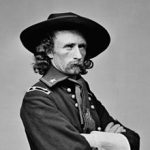
 might have been a result of the Indian’s “respect for this humble shover of the lead pencil.” I doubt that the Sioux and Cheyenne respected Kellogg for his journalistic abilities, but his death in one of the most notorious events in the nation’s history made him something of an martyr among newspapermen. The New York Herald later erected a monument to Kellogg over the supposed site of his grave on the Little Big Horn battlefield. Being an embedded journalist might be exciting, but it’s quite risky too.
might have been a result of the Indian’s “respect for this humble shover of the lead pencil.” I doubt that the Sioux and Cheyenne respected Kellogg for his journalistic abilities, but his death in one of the most notorious events in the nation’s history made him something of an martyr among newspapermen. The New York Herald later erected a monument to Kellogg over the supposed site of his grave on the Little Big Horn battlefield. Being an embedded journalist might be exciting, but it’s quite risky too.
 In any wartime situation, there always seem to be those who think the United States should not get involved…mostly because they think that if we just stay out of it, the enemy will leave us alone. Of course, history does not prove that theory. When we look at the wars that the United States has been drawn into, only after we were attacked too, we find that the enemy always intended to take on the United States too, and we were only delaying the inevitable. It seems like every wartime president has had to deal with the naysayers, and President Eisenhower was no different. During the Cold War years when the Communists were trying to take over the world, Eisenhower chose a strong United States defense against it, but his view of a strong defense was much different that General Hoyt Vandenberg’s view. Vandenberg wanted a massive increase in conventional land, air, and sea forces, while Eisenhower said that a cheaper and more efficient defense could be built around the nation’s nuclear arsenal. Senator Robert Taft argued that if efforts to reach a peace agreement in Korea failed, the United States should withdraw from the United Nations forces and make its own policy for dealing with North Korea, basically a completely independent foreign policy, or what one “might call the ‘fortress’ theory of defense.” While both of these suggestions might seem like the best course of action, history tells us that Senator Taft’s suggestion would make us look weak, and possibility bring about attacks on the United States, and while I would tend to agree with General Vandenberg, that we need a strong defense system, I also understand that as technology changes, nations must change with it. Having hundreds of fighter planes is not necessary, if a few can drop a bomb that will settle the matter once and for all. It is similar to the use of pen and paper when we live in a computer age.
In any wartime situation, there always seem to be those who think the United States should not get involved…mostly because they think that if we just stay out of it, the enemy will leave us alone. Of course, history does not prove that theory. When we look at the wars that the United States has been drawn into, only after we were attacked too, we find that the enemy always intended to take on the United States too, and we were only delaying the inevitable. It seems like every wartime president has had to deal with the naysayers, and President Eisenhower was no different. During the Cold War years when the Communists were trying to take over the world, Eisenhower chose a strong United States defense against it, but his view of a strong defense was much different that General Hoyt Vandenberg’s view. Vandenberg wanted a massive increase in conventional land, air, and sea forces, while Eisenhower said that a cheaper and more efficient defense could be built around the nation’s nuclear arsenal. Senator Robert Taft argued that if efforts to reach a peace agreement in Korea failed, the United States should withdraw from the United Nations forces and make its own policy for dealing with North Korea, basically a completely independent foreign policy, or what one “might call the ‘fortress’ theory of defense.” While both of these suggestions might seem like the best course of action, history tells us that Senator Taft’s suggestion would make us look weak, and possibility bring about attacks on the United States, and while I would tend to agree with General Vandenberg, that we need a strong defense system, I also understand that as technology changes, nations must change with it. Having hundreds of fighter planes is not necessary, if a few can drop a bomb that will settle the matter once and for all. It is similar to the use of pen and paper when we live in a computer age.
President Eisenhower was no stranger to sending the military might of the United States out to attack the enemy, and in his days as a general, he made those decisions every day, but as every one should realize, the 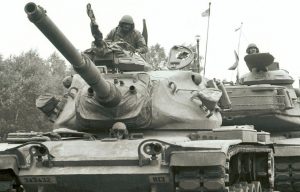 more men you have to send, the more possibility of losing them. The decision to send soldiers to their deaths was not one that Eisenhower ever took lightly. With a strong nuclear arsenal, the enemy nation knew that they had better think twice before taking on the United States.
more men you have to send, the more possibility of losing them. The decision to send soldiers to their deaths was not one that Eisenhower ever took lightly. With a strong nuclear arsenal, the enemy nation knew that they had better think twice before taking on the United States.
Without naming either man, President Eisenhower responded to both during a speech at the National Junior Chamber of Commerce meeting in Minneapolis. His forceful speech struck back at critics of his Cold War foreign policy. He insisted that the United States was committed to the worldwide battle against communism and that he would maintain a strong United States defense. It was just a few months into his presidency, and the Korean War still raging, but Eisenhower laid out his basic approach to foreign policy with this speech. He began by characterizing the Cold War as a battle “for the soul of man himself.” He rejected Taft’s idea that the United States should pursue isolationism, and instead he insisted that all free nations had to stand together saying, “There is no such thing as partial unity.” To Vandenberg’s criticisms of the new Air Force budget, in which the president proposed a $5 billion cut from the Air Force budget, Eisenhower explained that vast numbers of aircraft were not needed in the new atomic age. Just a few planes armed with nuclear weapons could “visit on an enemy as much explosive violence as was hurled against Germany by our entire air effort throughout four years of World War II.” With this speech, Eisenhower thus pointed out the two major points of what came to be known at the time as his “New Look” foreign policy. First was his advocacy of multi-nation responses to communist aggression in preference to unilateral action by the United States. Second was the idea that came to be known as the “bigger bang for the buck” defense strategy.
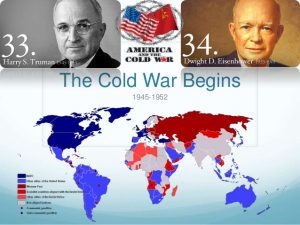 Anytime a nation is facing war, it is a stressful time for its people, but no nation will do well using the isolation strategy, because a nation that appears to be weak in its own defense, will ultimately become a target for attack. I am not an advocate for the United Nations, and in fact, I believe we need to disband the United Nations, but I do believe that a nation must have allies…nations with like values, who are willing to go to war to back up their allies, and that we must not allow bully nations to take over smaller nations, because that only strengthens their resolve to expand further. I also believe that when technology becomes available, it must be properly combined with human forces to achieve the best result in the most efficient way.
Anytime a nation is facing war, it is a stressful time for its people, but no nation will do well using the isolation strategy, because a nation that appears to be weak in its own defense, will ultimately become a target for attack. I am not an advocate for the United Nations, and in fact, I believe we need to disband the United Nations, but I do believe that a nation must have allies…nations with like values, who are willing to go to war to back up their allies, and that we must not allow bully nations to take over smaller nations, because that only strengthens their resolve to expand further. I also believe that when technology becomes available, it must be properly combined with human forces to achieve the best result in the most efficient way.
 For most of us, taking a fall, of any kind is no fun. Taking a fall off of a one story roof is terrifying, and if we were to fall from a two story building, we might not expect to live through it. For Serbian flight attendant, Vesna Vulovic a two story fall is like stubbing her toe. On January 26, 1972, while she was working on JAT Flight 367, a terrorist bomb exploded on the plane. Vesna found herself in a freefall without a parachute at an altitude of 33,333 feet. Vulovic, who was just 22 years old, and thought she had landed a wonderful career that would allow her to travel to exotic places. Never in a million years did she imagine that her career would end this way.
For most of us, taking a fall, of any kind is no fun. Taking a fall off of a one story roof is terrifying, and if we were to fall from a two story building, we might not expect to live through it. For Serbian flight attendant, Vesna Vulovic a two story fall is like stubbing her toe. On January 26, 1972, while she was working on JAT Flight 367, a terrorist bomb exploded on the plane. Vesna found herself in a freefall without a parachute at an altitude of 33,333 feet. Vulovic, who was just 22 years old, and thought she had landed a wonderful career that would allow her to travel to exotic places. Never in a million years did she imagine that her career would end this way.
Flight 367 was flying over Srbská Kamenice in Czechoslovakia, which is now part of the Czech Republic. She had not been scheduled to be on that flight, but she had been mixed up with another flight attendant who was also named Vesna. I’m sure she wished she had not been as she was falling through the air that awful day in 1972. While falling 33,333 feet, a person has a good bit of time to think about what they wished they had done, or not done. And at 22, I’m sure there were many things she had hoped to accomplish in her lifetime, and now those things could never happen.
The official report of the Czechoslovak investigation commission, which was handed over to the ICAO on May 7, 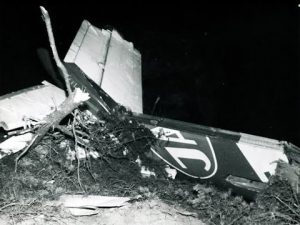 1974, stated that there had been an explosion in the front baggage compartment of the plane. The Czechoslovak secret service, which was leading the investigation, presented parts of an alarm clock ten days after the crash which they claimed came from a bomb. The report concluded that a bomb brought down Flight 367. That morning, an anonymous man called the newspaper Kvällsposten published in Malmö, Sweden, claiming, in broken Swedish, that he was a Croat and member of a nationalist group that placed the bomb on the plane. Shortly after the phone call, the Yugoslav government blamed the Ustaše. According to the official report the explosion tore the McDonnell Douglas DC-9-32 to pieces in mid-air. Vulovic was the only survivor.
1974, stated that there had been an explosion in the front baggage compartment of the plane. The Czechoslovak secret service, which was leading the investigation, presented parts of an alarm clock ten days after the crash which they claimed came from a bomb. The report concluded that a bomb brought down Flight 367. That morning, an anonymous man called the newspaper Kvällsposten published in Malmö, Sweden, claiming, in broken Swedish, that he was a Croat and member of a nationalist group that placed the bomb on the plane. Shortly after the phone call, the Yugoslav government blamed the Ustaše. According to the official report the explosion tore the McDonnell Douglas DC-9-32 to pieces in mid-air. Vulovic was the only survivor.
Vulovic suffered a fractured skull, three broken vertebrae, one of which was crushed completely, and that left her temporarily paralyzed from the waist down, and two broken legs. She was in a coma for 27 days. In an interview, she commented that according to the man who found her, “…I was in the middle part of the plane. I was found with my head down and my colleague on top of me. One part of my body with my leg was in the plane and my head was out of the plane. A catering trolley was pinned against my spine and kept me in the  plane. The man who found her said she was lucky. He was in the German Army as a medic during World War II. He knew how to treat trauma. The medic is identified as Bruno Henke. Vulovic continued working for JAT Airways at a desk job following a full recovery from her injuries. She regained the use of her legs and continued to fly sporadically. She claimed she had no fear of flying, which she attributed to her loss of memory of the crash, and she even enjoyed watching movies with plane crashes. She was considered a national heroine throughout the former Yugoslavia and was awarded the Guinness Record title by Paul McCartney at a ceremony in 1985. As to becoming the world record freefall holder, Vesna comments, “I am like a cat, I have had nine lives.”
plane. The man who found her said she was lucky. He was in the German Army as a medic during World War II. He knew how to treat trauma. The medic is identified as Bruno Henke. Vulovic continued working for JAT Airways at a desk job following a full recovery from her injuries. She regained the use of her legs and continued to fly sporadically. She claimed she had no fear of flying, which she attributed to her loss of memory of the crash, and she even enjoyed watching movies with plane crashes. She was considered a national heroine throughout the former Yugoslavia and was awarded the Guinness Record title by Paul McCartney at a ceremony in 1985. As to becoming the world record freefall holder, Vesna comments, “I am like a cat, I have had nine lives.”
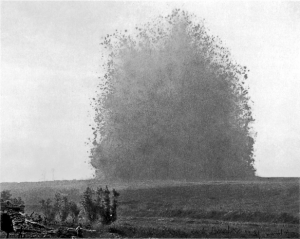 The manner in which battles are fought and won, never ceases to amaze me. In 1916, British forces began planning the Battle of Messines Ridge. For 18 months, soldiers worked to place nearly 1 million pounds of explosives in tunnels under the German positions. The tunnels extended to some 2,000 feet in length, and some were as much as 100 feet below the surface of the ridge, where the Germans had long since been entrenched. The Germans had no idea that they were there, and no idea what was going to happen. I find myself in complete amazement, that all those soldiers were working a mere 100 feet below ground, and the German soldiers above them had no idea. It was the element of surprise that was the whole key to this successful attack.
The manner in which battles are fought and won, never ceases to amaze me. In 1916, British forces began planning the Battle of Messines Ridge. For 18 months, soldiers worked to place nearly 1 million pounds of explosives in tunnels under the German positions. The tunnels extended to some 2,000 feet in length, and some were as much as 100 feet below the surface of the ridge, where the Germans had long since been entrenched. The Germans had no idea that they were there, and no idea what was going to happen. I find myself in complete amazement, that all those soldiers were working a mere 100 feet below ground, and the German soldiers above them had no idea. It was the element of surprise that was the whole key to this successful attack.
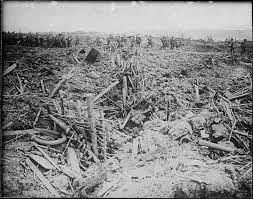 At 3:10am on June 7, 1917, a series of simultaneous explosions rocked the area. The explosions were heard as far away as London. A German observer described the explosions saying, “nineteen gigantic roses with carmine petals, or enormous mushrooms, rose up slowly and majestically out of the ground and then split into pieces with a mighty roar, sending up multi-colored columns of flame mixed with a mass of earth and splinters high in the sky.” While Messines Ridge itself was considered a relatively limited victory, it had a considerable effect. German losses that day included more than 10,000 men who died instantly, along with some 7,000 prisoners…men who were too stunned and disoriented by the explosions to resist the infantry assault.
At 3:10am on June 7, 1917, a series of simultaneous explosions rocked the area. The explosions were heard as far away as London. A German observer described the explosions saying, “nineteen gigantic roses with carmine petals, or enormous mushrooms, rose up slowly and majestically out of the ground and then split into pieces with a mighty roar, sending up multi-colored columns of flame mixed with a mass of earth and splinters high in the sky.” While Messines Ridge itself was considered a relatively limited victory, it had a considerable effect. German losses that day included more than 10,000 men who died instantly, along with some 7,000 prisoners…men who were too stunned and disoriented by the explosions to resist the infantry assault.
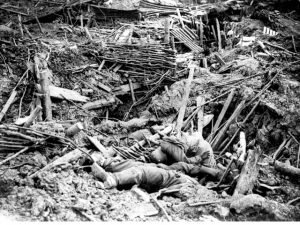
It was a crushing victory over the Germans. The German army was forced to retreat to the east. This retreat and the sacrifice that it entailed marked the beginning of their gradual, but continuous loss of territory along the Western Front. It also secured the right flank of the British army’s push towards the much-contested Ypres region, which was the eventual objective of the planned attack. Over the next month and a half, British forces continued to push the Germans back toward the high ridge at Passchendaele. Then on July 31 the British army launched it’s offensive, known as the Battle of Passchendaele or the Third Battle of Ypres.

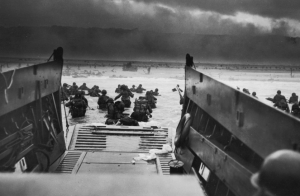 On this D-Day, a subject I have previously written about, I began to wonder about a different side of the story of this age old battle that everyone has heard of, even if some don’t know what it was all about. My thoughts turned to General Eisenhower. It was he who had the unfortunate task of deciding to attack the Germans who were occupying France, by way of the beaches of Normandy, France. It was he who had to carry the emotional burden of knowing that if the attack was made, he would be sending men to die. I would not have wanted to be in his shoes as he pondered this monumental decision. Nevertheless, someone had to make the decision. Things could not go on as they were. The future of the free world was dependent on the decisions made by this one man.
On this D-Day, a subject I have previously written about, I began to wonder about a different side of the story of this age old battle that everyone has heard of, even if some don’t know what it was all about. My thoughts turned to General Eisenhower. It was he who had the unfortunate task of deciding to attack the Germans who were occupying France, by way of the beaches of Normandy, France. It was he who had to carry the emotional burden of knowing that if the attack was made, he would be sending men to die. I would not have wanted to be in his shoes as he pondered this monumental decision. Nevertheless, someone had to make the decision. Things could not go on as they were. The future of the free world was dependent on the decisions made by this one man.
As families listened to their radio stations on the morning of June 6, 1944, one Valerie Lauder, who was 18 at the time, had graduated from Stephens Junior College that May and was not due at Northwestern University and the Medill School of Journalism until September was among the listeners. Her father was listening too, until he had to go to work. She said that President Roosevelt came on the radio and offered a prayer. Then, she heard General Eisenhower’s recorded reading of the order of the day, the troops in LSTs and transports heard it over loudspeakers. At that point, Val decided that she would really like to meet General Eisenhower, and given her chosen profession as a journalist, she was able to eventually make that happen. In fact, she was not only able to meet General Eisenhower 2½ years later, but was also able to preside at his press conference with the student press club that she had created and the Chicago Daily News sponsored.
She related the scene, “On January 18, 1947, Wearing two battle ribbons on his waist-length “Eisenhower jacket,” the supreme commander of the Allied Expeditionary Forces in Europe stood to my left, facing 165 student editors and photographers from high school and college newspapers throughout the greater Chicago area gathered in the Drake Hotel. Dressed in their Sunday best, pencils poised, notebooks open, they were seated on straight-back chairs set out in rows of 10 on either side of a center aisle. Ike stood at the end of the center aisle, about three feet in front of me. I introduced him.” As Val introduced General Eisenhower, she asked him, “General Eisenhower, what was the greatest decision you had to make during the war?” Eisenhower contemplated her question for a moment, and then answered her in a somber and serious tone about the D-Day landings. “To ensure the success of the Allied landings in Normandy,” he explained, “it was imperative that we prevent the enemy from bringing up reinforcements. All roads and rail lines leading to the areas of fighting on and around the beaches had to be cut or blocked. If reinforcements were allowed to reach the areas of fighting there, in our first, precarious attempts to get a foothold on the continent, the whole operation could be jeopardized. The landings might fail. The success of the landings on the beaches,” Ike said, reaching the end of the first row, starting back, “might well turn on the success of the paratroopers behind the lines.”
Then, on May 30, just six days before the scheduled landings, which were to have been June 5, a trusted aide and personal friend came to him, deeply concerned about the airborne landing. Val later that learned it was British Air Chief Marshal Sir Trafford Leigh-Mallory, who had been assigned to the Allied forces, with the title of Air Commander in Chief, which made him the air commander of the Allied invasion. He was apologetic about how late it was, so close to the jump-off time. But, he’d gone over it, and over it, and over it, and felt it simply would not succeed. The casualties would be too great. He pleaded with Eisenhower. “Casualties to glider troops would be 90% before they ever reached the ground,” he said. “The killed and wounded among the paratroopers would be 75%.” Eisenhower knew that would mean an unbearably high percentage of the 18,000 men who would drop into the darkness over Nazi-occupied France would become casualties. This would also mean that the survivors would be too few in number to succeed in their crucial mission of seizing, and holding the causeways. “The man was absolutely sincere, absolutely convinced it wouldn’t work,” Eisenhower said. “As a highly respected, capable officer, I trusted his judgment. I told him I’d think it over.”
After agonizing over the possible losses, he was still undecided just four days before the planned date. Eisenhower slowing, turned to face the students, he said, “I let the order stand.” With the words, his face seemed to relax. I suppose you would have to decide that you were going to be ok with the decision, or else it 
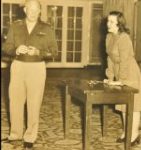 would drive you crazy. The students sat in stunned silence. “The airborne boys did their job.” Eisenhower went on with relief almost bordering on elation. “And, I am happy to say, the casualties were only 8%.” Eisenhower was not just a general setting up a battle, but rather a man with a heartfelt concern for the men in the airborne divisions and the men in the landing craft headed for the beaches. As he put it in his book, Crusade in Europe, “It would be difficult to conceive of a more soul-racking problem.” I have to agree. To only lose 8% of the men in that situation, well that is…unbelievable!!
would drive you crazy. The students sat in stunned silence. “The airborne boys did their job.” Eisenhower went on with relief almost bordering on elation. “And, I am happy to say, the casualties were only 8%.” Eisenhower was not just a general setting up a battle, but rather a man with a heartfelt concern for the men in the airborne divisions and the men in the landing craft headed for the beaches. As he put it in his book, Crusade in Europe, “It would be difficult to conceive of a more soul-racking problem.” I have to agree. To only lose 8% of the men in that situation, well that is…unbelievable!!
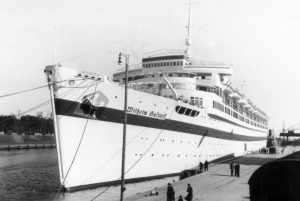 When we think of disasters at sea, Titanic is the first ship that most likely comes to mind, and while Titanic was a terrible tragedy, it was not the worst disaster at sea, by any means. It is amazing to me, however, that some of the others are never talked about at all, and in fact, you may have never heard about them. Titanic had a capacity of 3547 people, but was only carrying 2223 with passengers and crew. The loss of more than 1500 lives, was horrific to be sure, but it was not the worst disaster at sea in history. That distinction goes to The Wilhelm Gustloff.
When we think of disasters at sea, Titanic is the first ship that most likely comes to mind, and while Titanic was a terrible tragedy, it was not the worst disaster at sea, by any means. It is amazing to me, however, that some of the others are never talked about at all, and in fact, you may have never heard about them. Titanic had a capacity of 3547 people, but was only carrying 2223 with passengers and crew. The loss of more than 1500 lives, was horrific to be sure, but it was not the worst disaster at sea in history. That distinction goes to The Wilhelm Gustloff.
The Wilhelm Gustloff was built by the Blohm & Voss shipyards. It measured 684 feet 1 inch long by 77 feet 5 inches wide with a capacity of 25,484 gross register tons. The ship was launched on 5 May 1937. Originally the ship was intended to be named Adolf Hitler, but was named after Wilhelm Gustloff, a leader of the National Socialist Party’s Swiss branch, who had been assassinated by a Jewish medical student in 1936. Hitler decided on the name change after sitting next to Gustloff’s widow during his memorial service. I guess Hitler managed to do a few nice things in his horrid lifetime. The ship was the first purpose-built cruise liner for the German Labour Front or Deutsche Arbeitsfront, 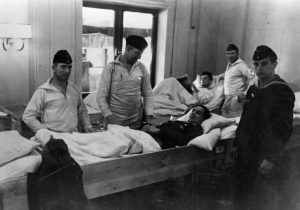 DAF and used by subsidiary organization Kraft durch Freude, KdF meaning Strength Through Joy. The purpose of the ship was to provide recreational and cultural activities for German functionaries and workers, including concerts, cruises, and other holiday trips, and as a public relations tool, to present “a more acceptable image of the Third Reich.” She was the flagship of the KdF cruise fleet, her last civilian role, until the spring of 1939.
DAF and used by subsidiary organization Kraft durch Freude, KdF meaning Strength Through Joy. The purpose of the ship was to provide recreational and cultural activities for German functionaries and workers, including concerts, cruises, and other holiday trips, and as a public relations tool, to present “a more acceptable image of the Third Reich.” She was the flagship of the KdF cruise fleet, her last civilian role, until the spring of 1939.
The Wilhelm Gustloff became a German hospital ship from September 1939 to November 1940, with its official designation being Lazarettschiff. Then, beginning on 20 November 1940, the medical equipment was removed from the ship and she was repainted from the hospital ship colors of white with a green stripe to standard naval grey. As a consequence of the British blockade of the German coastline, she was used as a barracks ship for approximately 1,000 U-boat trainees of the 2nd Submarine Training Division in the port of Gdynia, which had been occupied by Germany and renamed Gotenhafen. The ship was based near Danzig. Then, as things started to go from bad to worse during World War II, the Germans decided that they needed to evacuate as many people as possible from Courland, East Prussia and Danzig, West Prussia. On  January 30, 1945 during Operation Hannibal, which was the naval evacuation of German troops and civilians from Courland, East Prussia, and Danzig, West Prussia as the Soviet Army advanced. The Wilhelm Gustloff’s final voyage was to evacuate German refugees and military personnel as well as technicians who worked at advanced weapon bases in the Baltic from Gdynia, then known to the Germans as Gotenhafen, to Kiel. The ship’s capacity was 1465, but because they were evacuating people, about 9,400 people were onboard. The ship was hit by a torpedo from Soviet submarine S-13 in the Baltic Sea. It quickly sank, taking all 9,400 people with it. The loss of the Wilhelm Gustloff remains the worst disaster at sea in history.
January 30, 1945 during Operation Hannibal, which was the naval evacuation of German troops and civilians from Courland, East Prussia, and Danzig, West Prussia as the Soviet Army advanced. The Wilhelm Gustloff’s final voyage was to evacuate German refugees and military personnel as well as technicians who worked at advanced weapon bases in the Baltic from Gdynia, then known to the Germans as Gotenhafen, to Kiel. The ship’s capacity was 1465, but because they were evacuating people, about 9,400 people were onboard. The ship was hit by a torpedo from Soviet submarine S-13 in the Baltic Sea. It quickly sank, taking all 9,400 people with it. The loss of the Wilhelm Gustloff remains the worst disaster at sea in history.
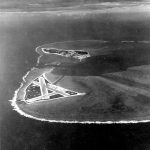 It’s a tiny island in the middle of the vast Pacific Ocean, so what possible impact could a battle for control of Midway Island have had? The answer is…much more than you might think. Sometimes, it’s not about the size of the nation, but rather about the might of its army. Japan is a little nation, it had built a mighty army and it was systematically defeating the Allies. Although other battles would soon make Midway seem like a small battle, no naval battle of World War II…and few others, if any, in all of naval history…would have so many momentous consequences ascribed to it as this one battle. So complete was Japan’s defeat at Midway, and so stunned was the Imperial High Command, that it would keep the results of the battle a secret from the Japanese people for the rest of the World War II.
It’s a tiny island in the middle of the vast Pacific Ocean, so what possible impact could a battle for control of Midway Island have had? The answer is…much more than you might think. Sometimes, it’s not about the size of the nation, but rather about the might of its army. Japan is a little nation, it had built a mighty army and it was systematically defeating the Allies. Although other battles would soon make Midway seem like a small battle, no naval battle of World War II…and few others, if any, in all of naval history…would have so many momentous consequences ascribed to it as this one battle. So complete was Japan’s defeat at Midway, and so stunned was the Imperial High Command, that it would keep the results of the battle a secret from the Japanese people for the rest of the World War II.
The story of the battle has been told many times over the years, and Midway continues to hold an almost mysterious place in the collective memory of the United States Navy and the United States in general. However, in recent decades a new generation of scholars has studied the facts of the battle. In some ways they 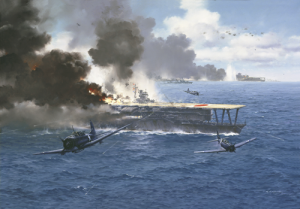 have removed the mystery of how such a “miracle” victory came to be and in other ways they have chalked it up to chance, luck, and the weather. The Americans had heard something about an attack, but the Japanese used the code location as “AF” to keep the attack location secret. The Americans suspected that it was Midway, so they sent a radio message that the island’s desalinization plant had broken down. The radio message was broadcast without encryption to ensure that Japan could read it if it was intercepted. The radio message was duly intercepted by Japan and reported by a message encoded in JN25 stating that AF’s desalinization plant was out of order and was intercepted by Station HYPO. “AF” was thus confirmed as Midway.
have removed the mystery of how such a “miracle” victory came to be and in other ways they have chalked it up to chance, luck, and the weather. The Americans had heard something about an attack, but the Japanese used the code location as “AF” to keep the attack location secret. The Americans suspected that it was Midway, so they sent a radio message that the island’s desalinization plant had broken down. The radio message was broadcast without encryption to ensure that Japan could read it if it was intercepted. The radio message was duly intercepted by Japan and reported by a message encoded in JN25 stating that AF’s desalinization plant was out of order and was intercepted by Station HYPO. “AF” was thus confirmed as Midway.
That was the beginning of the end for Japan. The Americans began to prepare for the attack. American scholars of Midway have long tried to explain away the many coincidences by characterizing the result of the battle as little short of a “miracle.” Walter Lord would name his 1967 narrative of Midway Incredible Victory, and 15 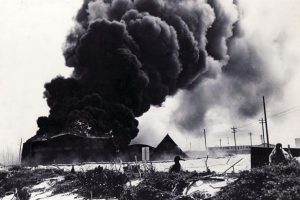 years later Gordon Prange’s posthumously published account of the battle was straightforwardly entitled Miracle at Midway. One battle participant’s memoir stated, “God was at Midway.” He saw divine intervention at work. The concept of the miracle has helped to explain the elements of the battle that have eluded detection, explication, or understanding. Some say that over the years, Midway has become less of a miracle, but that many mysteries remain. I say, that it was a miracle. God was at work at Midway. Even the weather worked against the Japanese when cloud cover prevented them from seeing what was right in front of them, and at the end of their attack…less than a week later, four Japanese fleet carriers would be twisted ruins on the bottom of the Pacific.
years later Gordon Prange’s posthumously published account of the battle was straightforwardly entitled Miracle at Midway. One battle participant’s memoir stated, “God was at Midway.” He saw divine intervention at work. The concept of the miracle has helped to explain the elements of the battle that have eluded detection, explication, or understanding. Some say that over the years, Midway has become less of a miracle, but that many mysteries remain. I say, that it was a miracle. God was at work at Midway. Even the weather worked against the Japanese when cloud cover prevented them from seeing what was right in front of them, and at the end of their attack…less than a week later, four Japanese fleet carriers would be twisted ruins on the bottom of the Pacific.

